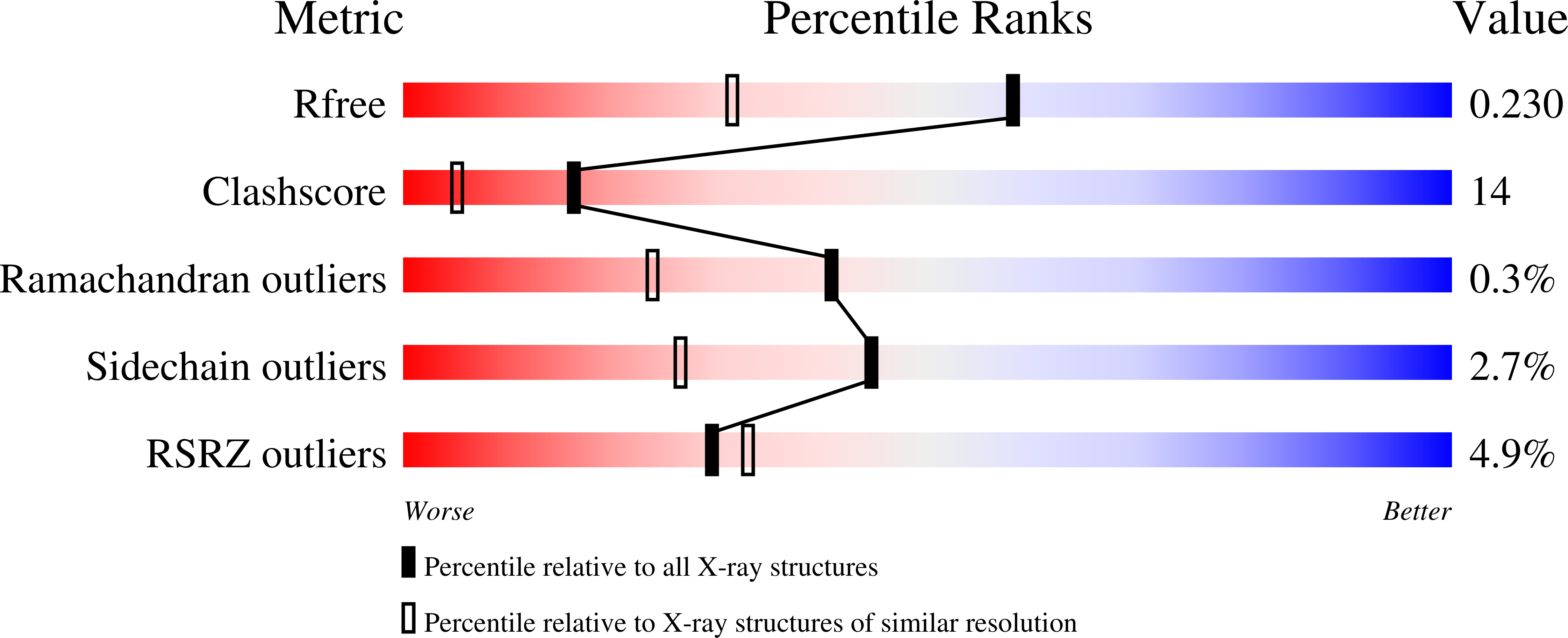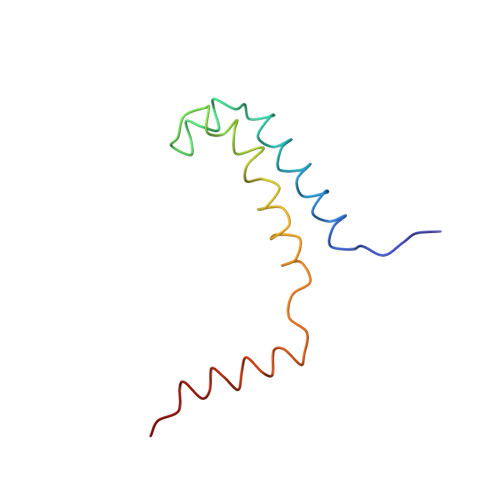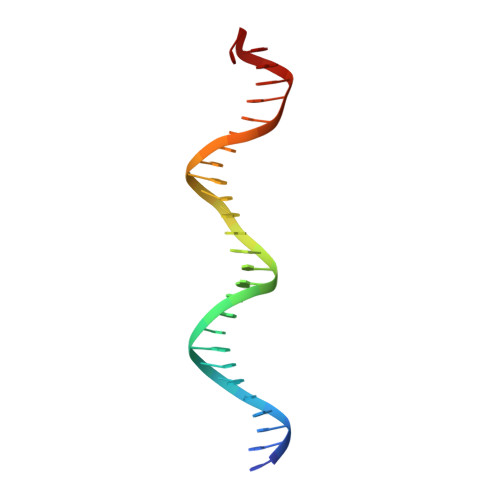Crystal Structure of Bacteriophage lambdacII and Its DNA Complex.
Jain, D., Kim, Y., Maxwell, K.L., Beasley, S., Zhang, R., Gussin, G.N., Edwards, A.M., Darst, S.A.(2005) Mol Cell 19: 259-269
- PubMed: 16039594
- DOI: https://doi.org/10.1016/j.molcel.2005.06.006
- Primary Citation of Related Structures:
1ZPQ, 1ZS4 - PubMed Abstract:
The tetrameric cII protein from bacteriophage lambda activates transcription from the phage promoters P(RE), P(I), and P(AQ) by binding to two direct repeats that flank the promoter -35 element. Here, we present the X-ray crystal structure of cII alone (2.8 A resolution) and in complex with its DNA operator from P(RE) (1.7 A resolution). The structures provide a basis for modeling of the activation complex with the RNA polymerase holoenzyme, and point to the key role for the RNA polymerase alpha subunit C-terminal domain (alphaCTD) in cII-dependent activation, which forms a bridge of protein/protein interactions between cII and the RNA polymerase sigma subunit. The model makes specific predictions for protein/protein interactions between cII and alphaCTD, and between alphaCTD and sigma, which are supported by previous genetic studies.
Organizational Affiliation:
The Rockefeller University, 1230 York Avenue, New York, New York 10021, USA.




















